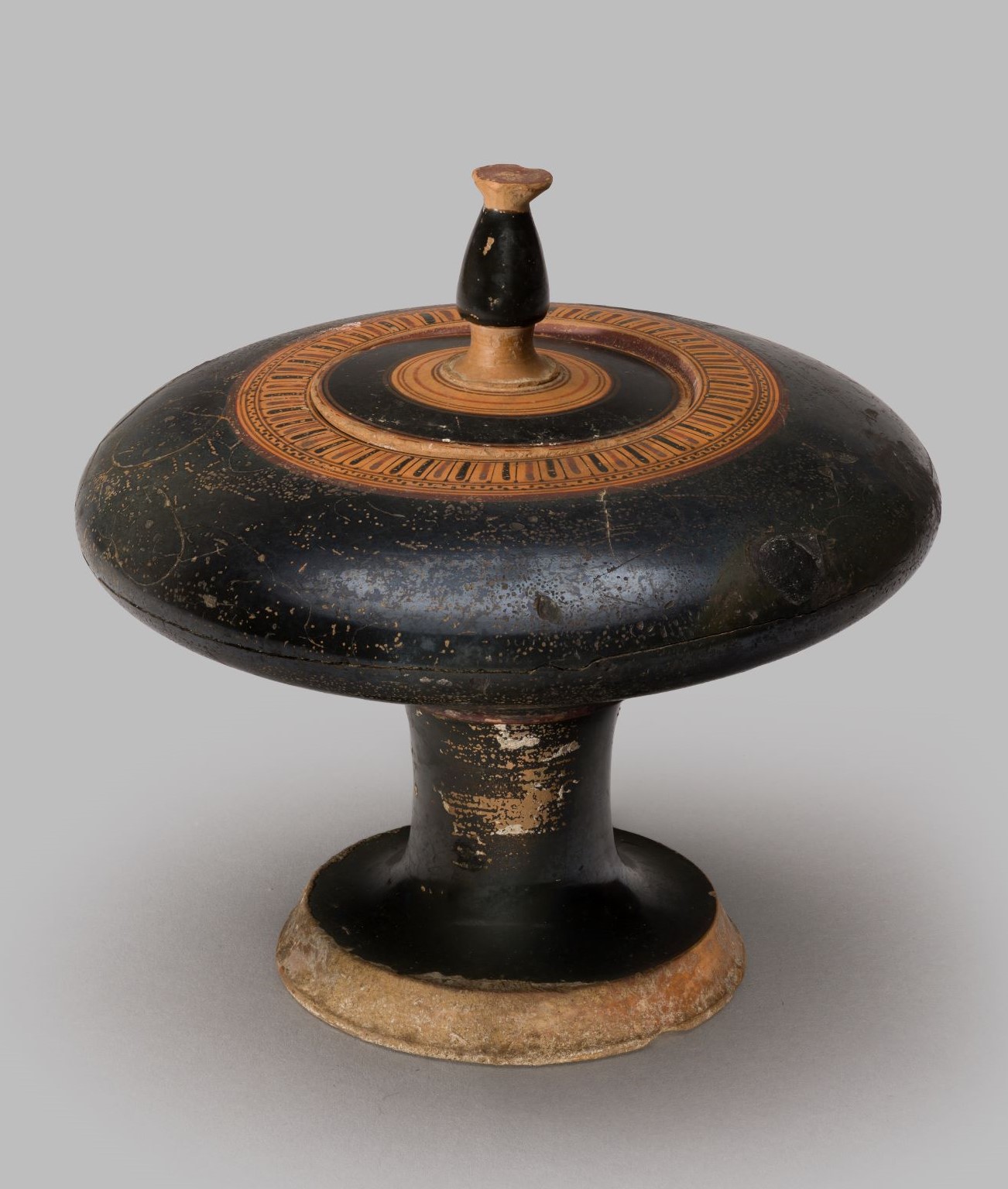
Plemochoe and Lid [G17]
Athenian Black-Figure, c. 500 BC
Painted terracotta (h (with lid). 18.1 cm, d. 17.8 cm), mended with minor restorations
The interior painted black, the underside of lid reserved. The exterior painted black, with reserved band at foot and decorative bands around the lid and mouth.
This container was for perfumed oil. The incurved rim prevented the valuable liquid from spilling when it was carried. Several ancient writers refer to a vessel called a ‘plemochoe’. The term πλημοχοη derives from ‘πλημη’ (brimming over), and ‘χεω’ (to pour). The grammarian Athenaios (2nd-3rd century AD) defines the plemochoe as ‘a terra cotta vessel shaped like a top standing on a steady foot.’ He goes on to state that it was used during the Eleusinian Mysteries when, on the last day ‘they filled two plemochoai and set them up one to the east, one to the west, and then overturned them, saying mystic words as they did so.’ (Deipnosophistae, 11.496 a-b)
Containers of this shape are often shown in vase paintings, appearing in domestic interiors where women are going about their daily tasks, and among the offerings brought by women to the grave.
Literature: J. Falconer and T. Mannack, Corpus Vasorum Antiquorum: Great Britain, Fascicule 19: Winchester College (Oxford, 2002), p. 6, plate 5.4-5; J.D. Beazley, Attic Black-Figure Vase-Painters (Oxford, 1956), p. 518.36; Winchester College Memorial Buildings: Department of Classical Art (Winchester, 1909), p. 22 (no. 70)
Provenance: From Athens, at Winchester College by 1909
Location: Treasury, Gallery 3